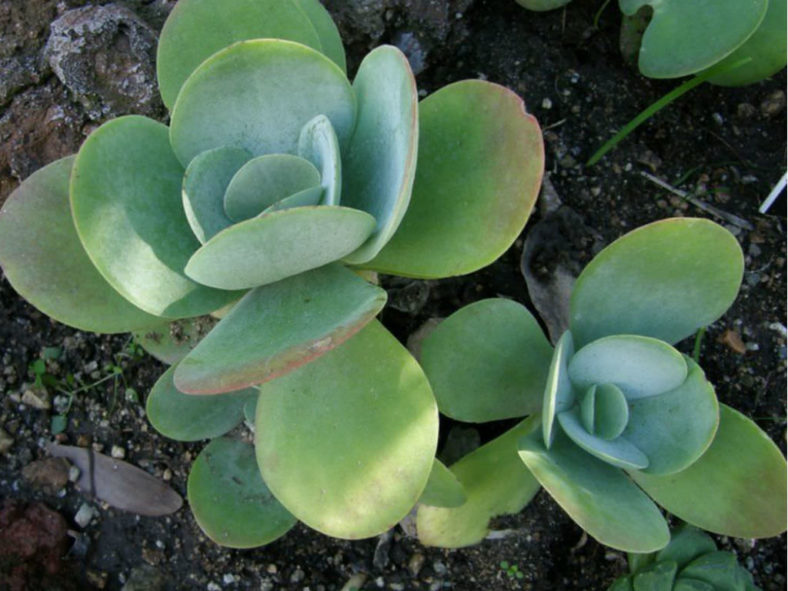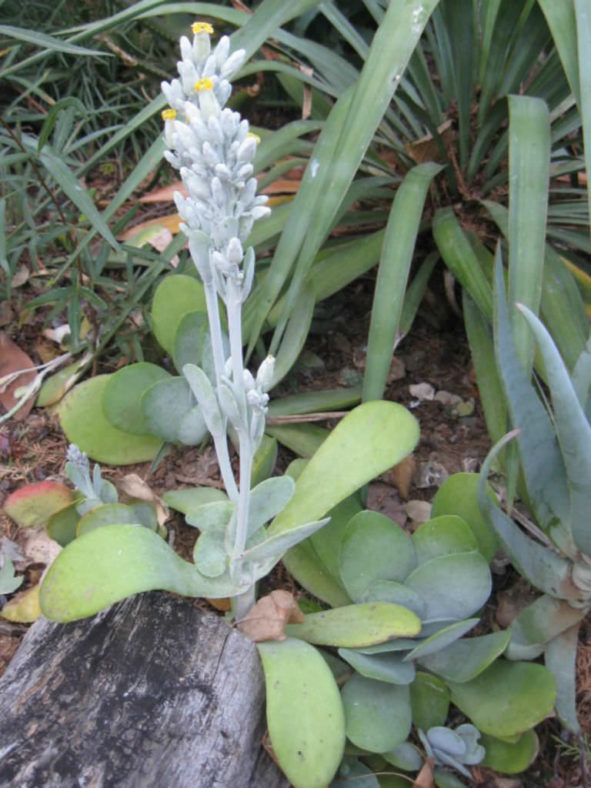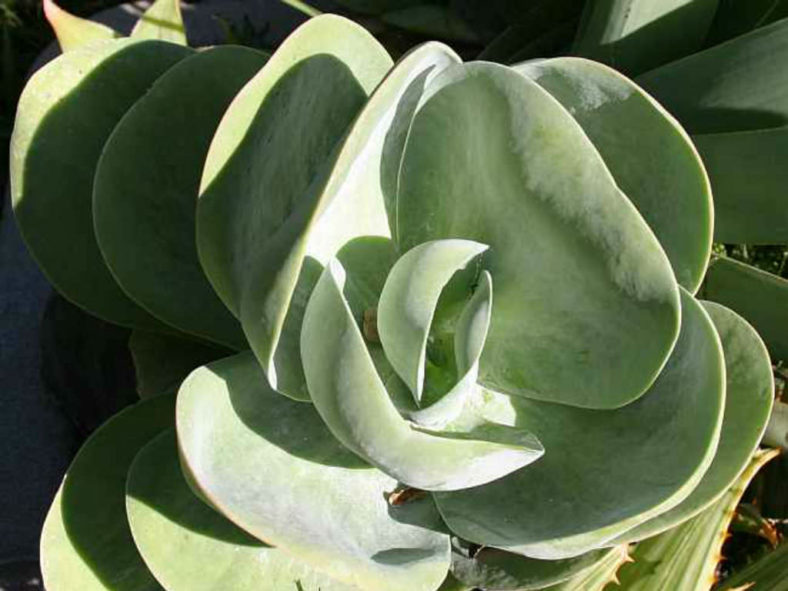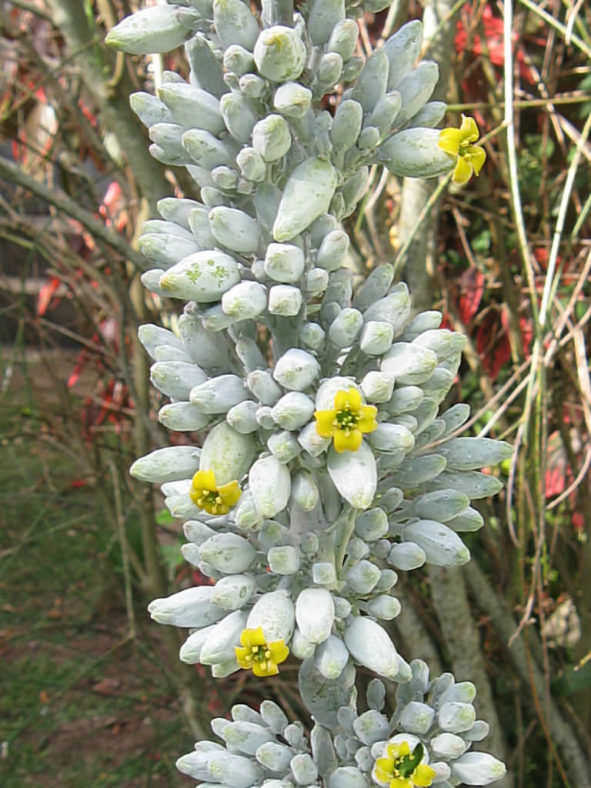Scientific Name
Kalanchoe thyrsiflora Harv.
Common Name(s)
Bird's Brandy, Desert Cabbage, Flapjacks, Ice Sculpture, Paddle Plant, White Lady Kalanchoe, Yellow Flapjacks
Synonym(s)
Kalanchoe alternans
Scientific Classification
Family: Crassulaceae
Subfamily: Sedoideae
Tribe: Kalanchoeae
Genus: Kalanchoe
Description
Kalanchoe thyrsiflora is a lovely succulent that forms a basal rosette of fleshy, rounded, grayish-green leaves covered with a white powdery bloom and with margins often tinged red. It is often confused with Kalanchoe luciae.
The fragrant flowers are cylindrical, brilliant yellow, and appear from mid-summer to mid-winter. The inflorescence is erect with densely clustered thyrse-like panicles and can reach up to 5 feet (1.5 m) in height.
Based on an error introduced in The Plant List, Kalanchoe thyrsiflora has been treated by many online sources as a synonym of Kalanchoe tetraphylla. This species is slightly rarer than its counterpart, Kalanchoe luciae, which turns a vibrant red when stressed and has larger leaves. The plants commonly distributed under the name Kalanchoe thyrsiflora are, in fact, usually specimens of the related Kalanchoe luciae.

Hardiness
USDA hardiness zones 9b to 11b: from 25 °F (−3.9 °C) to 50 °F (+10 °C).
How to Grow and Care
Kalanchoe care is minimal, but be cautious about light levels. Intense sunlight can burn the tips of the leaves. When growing Kalanchoes, place pots in partial sun to light shade areas.
The flowering varieties are highly rewarding for their colorful and long-lasting flowers. They prefer bright, sunny locations, especially in the growing season. Water moderately from fall to winter when the growth is most active. Reduce watering during the hottest summer months when the plants are mostly dormant and winter when the growth slows significantly. Let the soil surface dry out between waterings. Watch the fleshy leaves for signs of water distress. An ordinary potting soil mix is fine. Feed bi-weekly during the growing season with a liquid fertilizer, or use slow-release pellets.
These small plants require repotting every few years. When repotting, take additional care in handling, as the leaves are somewhat brittle and can snap easily. Clay pots work exceptionally well for planting Kalanchoes. Ensure pots drain well and saucers empty easily.
Learn more at How to Grow and Care for Kalanchoe.
Origin
Kalanchoe thyrsiflora is native to Botswana and South Africa.
Links
- Back to genus Kalanchoe
- Succupedia: Browse succulents by Scientific Name, Common Name, Genus, Family, USDA Hardiness Zone, Origin, or cacti by Genus
Photo Gallery
Click on a photo to see a larger version.


